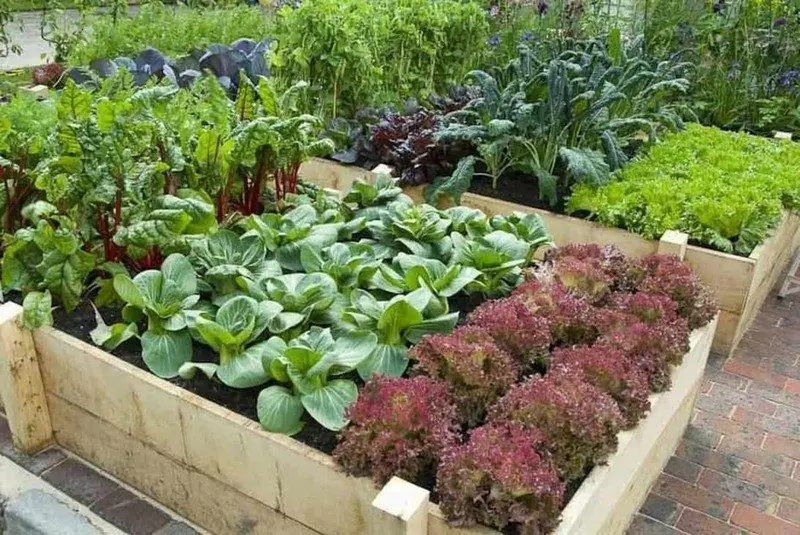
Table of contents:
- Author Bailey Albertson [email protected].
- Public 2023-12-17 12:53.
- Last modified 2025-06-01 07:32.
Why do we need warm beds and how to make them in spring
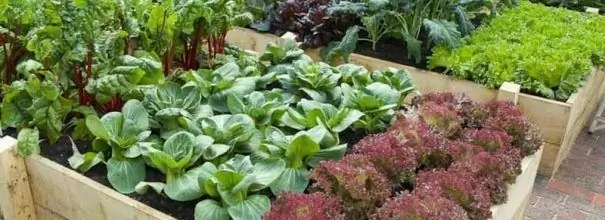
Traditionally, a warm bed is made in autumn, when after harvesting, a lot of tops, branches from pruning and other plant debris accumulate. Resourceful gardeners came up with the idea to bury it all in the ground, and plant vegetables on top. The method has taken root and is of interest to the younger generation, especially at the beginning of the new season. You can build a warm bed in the spring, but it is not suitable for all climates.
Content
-
1 What is a warm bed
1.1 Advantages and disadvantages of the garden
-
2 How to make a warm bed in spring
2.1 Video: a low warm bed of the original form
What is a warm bed
A warm bed resembles a puff cake. Coarse plant residues are laid down, for example, thick branches, stumps, boards, and above are smaller fractions: thin branches, tops, flower stems, kitchen waste (cleaning), manure, sawdust, litter from the poultry house, fallen leaves. The earth is poured on top with a layer of 20-30 cm. As a result, we get a bed on a cushion made of organic matter, which decays and releases heat.

A warm bed is like a puff cake filled with natural waste
Moreover, the earth is raised above the level of the site, it is better heated by the sun. To enhance this effect, arcs are installed on top and covered with foil or spunbond. Another plus is that rotting organic matter serves as food for plants.
Advantages and disadvantages of the garden
Advantages of a warm bed:
- in spring it warms up earlier than usual, which means it is suitable for an early harvest:
- in rainy periods, the water drains quickly from the raised surface, does not stagnate:
- contributes to order on the site, all vegetable debris is removed, in addition, warm beds are usually framed by boards, they look neat, and the paths between such borders can be covered with pebbles or sand, covered with dense material, laid tiles so that weeds do not grow and it is convenient to walk;
- it is comfortable to work, because the height of the bed sometimes reaches 60-70 cm, you do not need to bend low.
Cons of a warm bed:
- in winter, the raised area freezes more strongly, with insufficient snow cover, strawberry bushes may die, podzimny planting of onions, garlic, etc.;
- in spring, the soil thaws and dries up early, watering should be started earlier than usual, often long before water is brought to the site;
- in the summer, in the heat, there will also be a problem with watering, they will be required more often than beds on flat ground;
- the organic filling gradually subsides, the ground level decreases, it is necessary to add it;
- ants like to settle in warm beds;
- material for framing will be required, otherwise the earth will creep into paths, washed out by rains;
- the construction of such a bed requires a lot of labor, it is easier to carry all the waste into a compost heap than to dig ditches, build curbs, shift the earth;
- not suitable for all crops, especially in the first year, when organic matter is still under a small layer of soil, it is possible to plant only plants with a shallow root system.
Warm beds are analogous to high ones, they are necessary in very damp areas (in a lowland, under a blank fence) and with a close occurrence of groundwater. They justify themselves in the damp climate of Primorye and North-West, but they are not at all suitable for the arid and hot south.
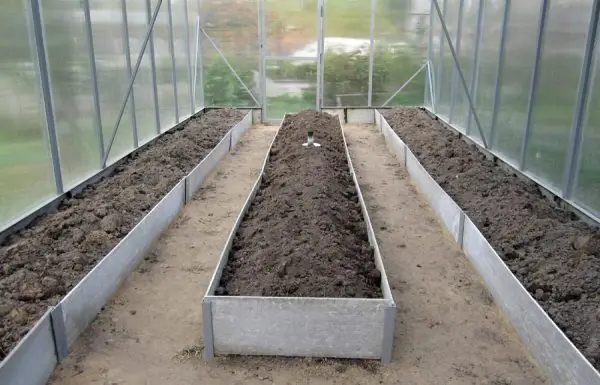
In a harsh climate, warm beds are made even inside greenhouses
Here, in Western Siberia, every summer is different, it can be hot and rainy. We made only one warm bed for strawberries along the fence. There is always a lot of snow in that place, it melts for a long time, when the rest of the land is dry. Ordinary beds there remain damp for a very long time, but this one thaws earlier, dries better, on hot days the shadow from the fence saves. I can also recommend starting with one garden bed in order to understand whether it will be beneficial in your climate and on a specific piece of land.
How to make a warm bed in spring
The principle of warm beds in spring and autumn is one, and there are at least two manufacturing options in any season:
-
low, raised warm bed:
- Dig a pit to the size of a bed to a depth of 30-40 cm. It makes no sense to dig deeper, it is in the upper layer (about 30 cm) that bacteria and earthworms live, which process organic matter. They do not go deeper, but go upward, into the layers warmed by the sun. Therefore, warm beds can be made high, but shallow.
- Fill the pit with plant waste: a third of the height with thick branches, boards (this will be drainage), and on top (the remaining 20 cm) with any organic matter in arbitrary proportions (grass, straw, manure, sawdust, etc.). Alternate wet layers with dry ones. So, freshly cut grass, kitchen waste, manure should be re-cut with straw, sawdust, dry foliage.
- Place a frame made of boards or other material 60-70 cm high.
-
Place the soil removed during the digging into this frame, on top of the organic pillow. If the soil is barren, mix it with compost or humus 1: 1, apply mineral fertilizers at the dosages indicated for the specific crop you plan to grow.

Raised warm bed If you want to make a low warm bed, then you need to dig a foundation pit to lay organic matter
-
High warm bed:
-
Place a frame 60-70 cm high, on top of the sod.

High warm bed A high bed is placed on top of the ground
- Lay a layer of organic matter up to half the height (as described in the previous method).
- Pour fertile soil on top.
-
Tips for making warm beds in spring:
- Allow the ground to warm up well before building the garden. Already at the end of winter, scatter snow on the sides, cover the desired area with black film. A bed on top of the frozen soil will create the effect of a thermos, the soil will remain cold for a long time, bacteria and worms will not want to live in it and recycle organic matter, there will be no heat from below.
- To make the organic matter start to rot faster and give the expected effect, spill it with some agent with live microorganisms: Fitosporin, yeast infusion, compost accelerator, EM-preparation, etc. You do not need to water the filling made of manure or bird droppings, it is already fine rotting.
-
Mice like to settle in heaps of branches and leaves, and if you also lay food waste, they will definitely come. To prevent such a misfortune, cover the bottom and sides with a mesh with a cell no larger than 1x1 cm.

Net in a warm bed To protect against rodents, cover at least the bottom with a fine mesh
- The optimal width of a warm bed is no more than 1 m, otherwise it will be difficult to reach the middle.
- If there are several warm beds on your site, then leave the distance between them at least 60 cm, ideally 1 m. The wider the passage, the more convenient it will be to walk with a watering can or a bucket in your hands, without lifting them above the sides of the fence.
Plants can be planted on warm beds of manure or litter from a poultry house no earlier than a week later. This organic matter burns with the release of a large amount of heat, the temperature of the earth in the garden can rise to + 70 ° C. In order not to burn the plants, you will have to observe the processes under the soil layer. 5-7 days after the construction of such a bed, immerse the thermometer to a depth of 20-30 cm. If the temperature does not exceed 40-50 ° C, start sowing. On warm beds only from plant debris, you can start planting immediately.
Video: a low warm bed of the original shape
Warm beds are arranged on top of an organic pillow, heated by it from below and by the sun from above. They are needed in regions with late spring to get an early harvest, and are relevant in areas with rainy summers. Warm beds can be placed in damp places, lowlands, as well as on top of infertile soil.
Recommended:
How To Make A Bed For Dolls Monster High With Your Own Hands + Video

Several options for making beds for Monster High dolls. Necessary materials and tools, a step-by-step description of the process with a photo
How To Make A Bunk Bed With Your Own Hands: A Diagram, Step-by-step Instructions, Etc. + Drawings, Photos And Videos

A bunk bed is easy to make with your own hands. Homemade bunk bed options. Drawings, step-by-step instructions, helpful tips
Making An Exclusive Bed With Your Own Hands With Video
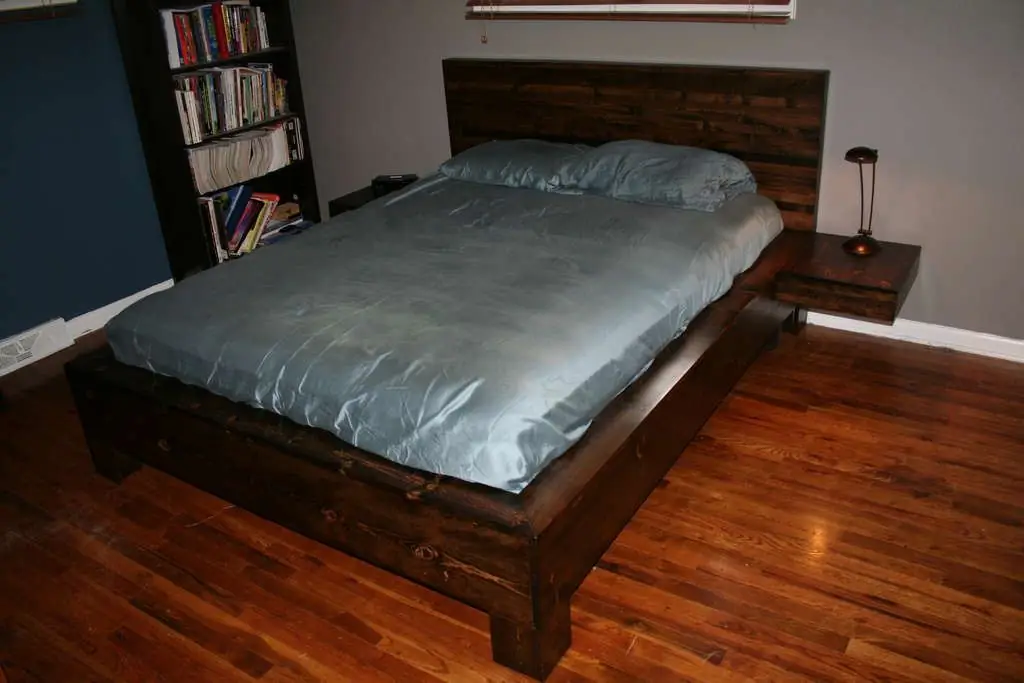
Step-by-step instructions for making an exclusive bed model: the necessary materials and tools for installing the bed
Why You Can't Iron Bed Linen After Washing
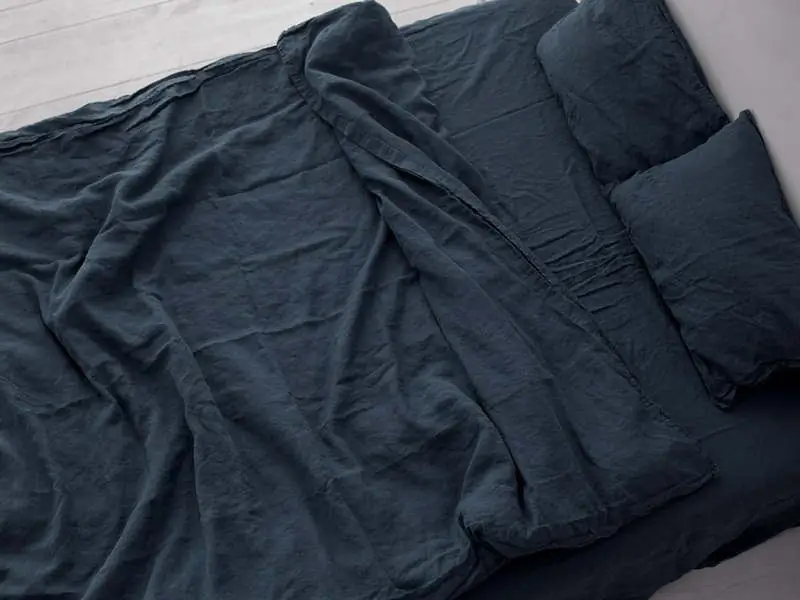
Why ironing bed linen and is it possible not to do it: arguments for and against, signs about unwanted linen and reviews of Internet users
How To Make A Do-it-yourself Bed For A Cat: Features Of A Cat Bed, Pattern And Manufacturing

Varieties of cat beds. Description of the stages of making homemade products. Choosing the right place for a bed
